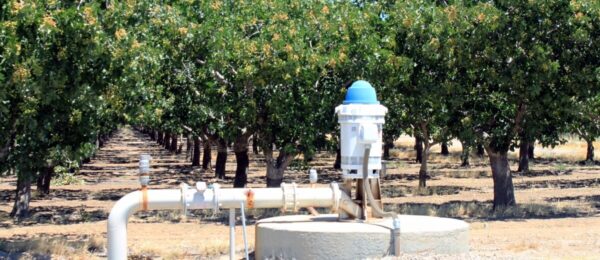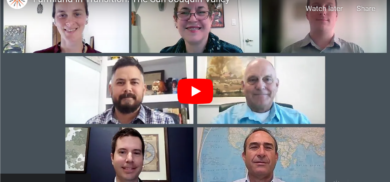
PPIC VIDEO: Farmland in Transition—The San Joaquin Valley
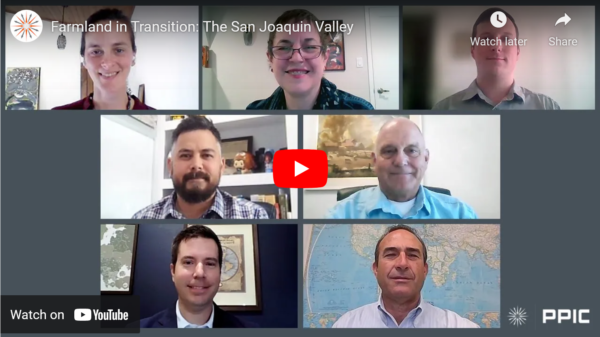 The San Joaquin Valley is California’s agricultural heartland and at the center of the state’s water challenges. As the region brings its groundwater basins into balance under the Sustainable Groundwater Management Act (SGMA), over half a million acres of irrigated farmland may need to come out of production.
The San Joaquin Valley is California’s agricultural heartland and at the center of the state’s water challenges. As the region brings its groundwater basins into balance under the Sustainable Groundwater Management Act (SGMA), over half a million acres of irrigated farmland may need to come out of production.
At a virtual event last week, PPIC researchers and a panel of local experts moderated by Ellen Hanak, director of the PPIC Water Policy Center, discussed how to manage this massive transition while reaping the greatest benefits from idled land and mitigating air quality concerns.
Watch video and read summary from the PPIC by clicking here.
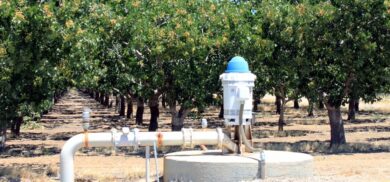
Public Comment Period Opens for Additional Resubmitted Groundwater Sustainability Plans with ‘Incomplete’ Determinations
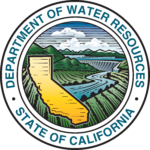 From the Department of Water Resources:
From the Department of Water Resources:
On January 28, 2022, the Department released eight Incomplete determinations on groundwater sustainability plans (GSPs) developed by local agencies to meet the requirements of the Sustainable Groundwater Management Act (SGMA). These basins were given 180 days to address deficiencies and resubmit their revised GSPs to the Department for review.
The revised GSPs in response to the Incomplete determination have been resubmitted to the Department and are now posted on the DWR SGMA Portal. These plans are open to public comment for 60 days after the posted date. Below in the table are links to the submitted plans, counties they cover, and the public comment period end date. More information about how to comment on a GSP can be found in the public comment factsheet, available in English and Spanish. Please note that a SGMA Portal account is not required to submit a public comment.
| Basin | Local ID (if applicable) | Counties Covered | Public Comment Period End Date |
| Eastern San Joaquin | N/A | Calaveras, San Joaquin, Stanislaus | 9/30/2022 |
| Merced | N/A | Mariposa, Merced, Stanislaus | 9/30/2022 |
| Chowchilla | N/A | Madera, Merced | 9/30/2022 |
| Kings (including Coordination Agreement) | Kings_SouthKings_Adopted | Fresno, Kings, Tulare | 9/30/2022 |
| Kings_NorthKings_Adopted | 9/30/2022 | ||
| Kings_NorthForkKings_Adopted | 9/30/2022 | ||
| Kings_McMullinArea_Adopted | 9/30/2022 | ||
| Kings_KingsRiverEast_Adopted | 9/30/2022 | ||
| Kings_James_Adopted | 9/30/2022 | ||
| Kings_CentralKings_Adopted | 9/30/2022 | ||
| Kaweah (including Coordination Agreement) | Mid-Kaweah GSA | Kings, Tulare | 9/30/2022 |
| Kaweah Subbasin – Greater Kaweah Subbasin | 9/30/2022 | ||
| East Kaweah | 9/30/2022 | ||
| Tulare Lake | N/A | Kern, Kings, Tulare | 9/30/2022 |
| Tule (including Coordination Agreement) | Tule Subbasin Alpaugh GSP | Kern, Tulare | 9/30/2022 |
| Pixley ID GSA | 9/30/2022 | ||
| LTRID GSA | 9/30/2022 | ||
| DEID GSA | 9/30/2022 | ||
| Basin 5-022.13 TCWA – Tule | 9/30/2022 | ||
| Basin 5-022.13 ETGSA GSP | 9/30/2022 | ||
| Kern County (including Coordination Agreement) | KGA GSP | Kern, San Luis Obispo | 9/30/2022 |
| Kern County Subbasin Olcese GSP | 9/30/2022 | ||
| Kern County Subbasin KRGSA GSP | 9/30/2022 | ||
| Henry Miller Water District GSA | 9/30/2022 | ||
| BVGSA | 9/30/2022 | ||
| South of Kern | 9/30/2022 |
Public Comment Period Opens for a Groundwater Sustainability Plan
A groundwater sustainability plan that has recently been submitted to the Department is now posted on the DWR SGMA Portal.
The plan is open to public comment for 75 days after the posted date. Below in the table is a link to the submitted plan, the county it covers, and the public comment period end date.
Information about how to comment on the plan can be found in a fact sheet in English and Spanish. Public comments are welcomed and encouraged. A SGMA Portal account is not necessary to submit comments.
| Basin | Local ID (if applicable) | County Covered | Public Comment Period End Date |
| Riverside-Arlington | N/A | Riverside | 10/15/2022 |
| San Gabriel Valley | N/A | Los Angeles | 10/15/2022 |
For questions or more information, email sgmps@water.ca.gov.
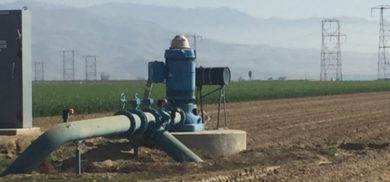
Public Comment Period Opens for Re-Submitted Groundwater Sustainability Plans with ‘Incomplete’ Determinations
 From the Department of Water Resources:
From the Department of Water Resources:
On January 21, 2022, the Department released four Incomplete determinations on groundwater sustainability plans (GSPs) developed by local agencies to meet the requirements of the Sustainable Groundwater Management Act (SGMA). These basins were given 180 days to address deficiencies and resubmit their revised GSPs to the Department for review.
The revised GSPs in response to the Incomplete determination have been re-submitted to the Department and are now posted on the DWR SGMA Portal. These plans are open to public comment for 60 days after the posted date. Below in the table are links to the submitted plans, counties they cover, and the public comment period end date.
The remaining revised GSPs must be submitted to the SGMA Portal by July 27, 2022 and will also be open to public comment for 60 days after the posted date.
Additional information related to this process is available in the GSP Reporting System – Incomplete Resubmission Process User Manual.
| Basin | Local ID (if applicable) | Counties Covered | Public Comment Period End Date |
| Cuyama | N/A | Kern, San Luis Obispo, Santa Barbara, Ventura | 9/19/2022 |
| Paso Robles Area | N/A | San Luis Obispo | 9/19/2022 |
| Delta-Mendota (including Coordination Agreement) | Aliso WD GSA | Fresno, Madera, Merced, San Joaquin, Stanislaus | 9/19/2022 |
| DM_NorthCentral_Adopted | 9/19/2022 | ||
| DM_Grassland_Adopted | 9/19/2022 | ||
| DM_Farmers_Adopted | 9/19/2022 | ||
| DM_FresnoCounty_Adopted | 9/19/2022 | ||
| DM_SJREC_Adopted | 9/19/2022 | ||
| Westside | N/A | Fresno, Kings | 9/19/2022 |
For questions or more information, email sgmps@water.ca.gov.
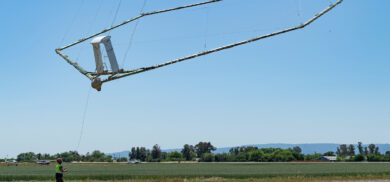
DWR: New Data Viewer Allows Public to See the Hidden Groundwater Basins Beneath our Feet and Helps Decision Makers Prepare for Drought Impacts
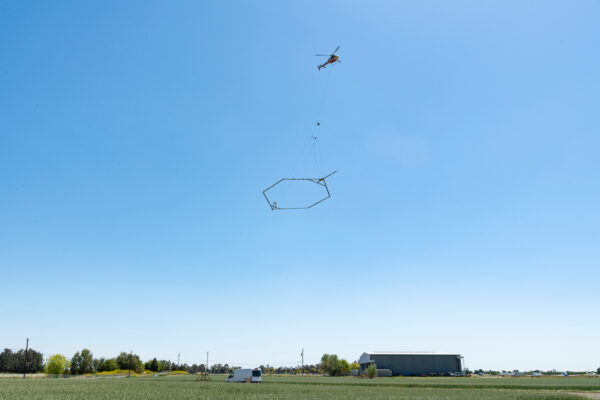
From the Department of Water Resources:
With California in the third year of a severe drought and facing continued extreme weather swings, the California Department of Water Resources (DWR) has been developing and using new data and forecasting tools to better anticipate and manage available water supplies.
One new technology that DWR is implementing statewide is collecting airborne electromagnetic (AEM) data across California to better understand the groundwater aquifer structure and to support the state and local goal of sustainable groundwater management. The AEM method is an innovative helicopter-based technology that has been compared to taking an MRI of the subsurface, which helps DWR to better understand underground geology. The resulting underground images provide local groundwater sustainability agencies (GSAs) with data to identify priority areas for recharging groundwater.
Click here to continue reading from the Department of Water Resources.
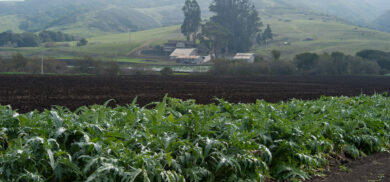
NEW REPORT: Landmark CA Groundwater policy neglects small, underrepresented farmers
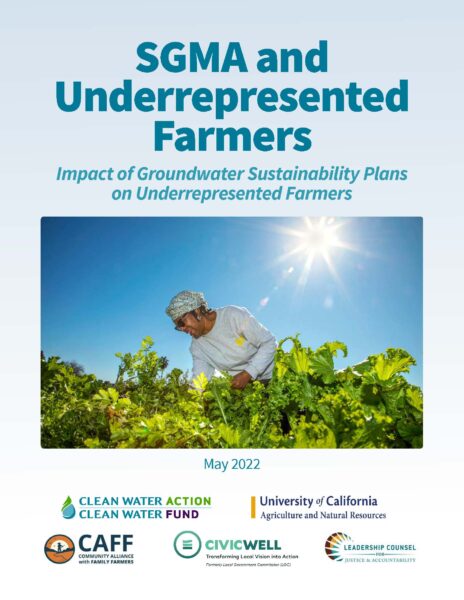 From the Community Alliance of Family Farmers:
From the Community Alliance of Family Farmers:
The most consequential groundwater policy in California history has so far failed to include small and underrepresented farmers, according to a new report.
Passed in 2014, the Sustainable Groundwater Management Act (SGMA) was designed to protect the state’s groundwater, setting up local agencies to develop regional plans to prevent over-pumping as demand grows, droughts persist, and climate change points to a drier future.
But despite the law’s mandate to consider the interests of all beneficial uses and users of groundwater, the new report titled SGMA and Underrepresented Farmers, released this week by Clean Water Action, Community Alliance with Family Farmers (CAFF), Civic Well, University of California Agriculture & Natural Resources, and the Leadership Counsel for Justice & Accountability, reveals that among 14 local Groundwater Sustainability Agencies (GSAs) studied, few considered the impacts of their plans on farmers growing on smaller acreages, those with shallow wells, tenant farmers, and farmers from underserved communities. None of the plans reviewed included efforts to provide language and culturally appropriate outreach to engage these farmers when drafting their plans.
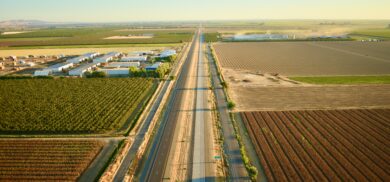
State funding to retire valley farmland could more than double under Gov. Newsom’s proposed budget
From SJV Water:
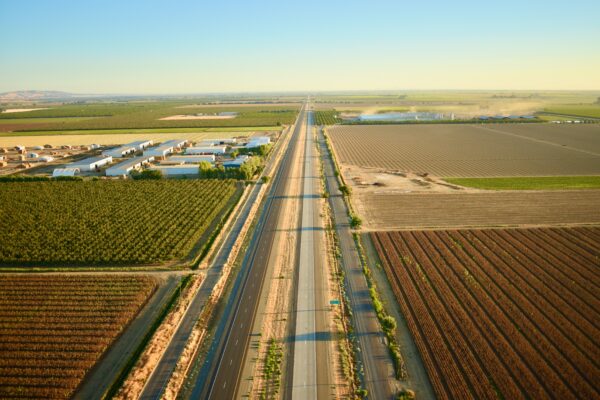 A state program aimed at retiring and repurposing farmland could get $60 million – more than doubling its current funding – under Gov. Newsom’s proposed budget.
A state program aimed at retiring and repurposing farmland could get $60 million – more than doubling its current funding – under Gov. Newsom’s proposed budget.
The Multibenefit Land Repurposing Program was created with $50 million from the 2021 state budget. The program helps pay for farmland to be taken out of production and repurposed to less water intensive uses.
Farmers in the San Joaquin Valley have pumped groundwater for crops without limits for generations. But groundwater levels are plummeting causing domestic and community wells to dry up and land to sink which has damaged roads, bridges and key regional and statewide canals.
Click here to continue reading at SJV Water.
RELATED:
-
- Millions in State Grants Awarded to Support Regional Responses to Challenging Water Supplies: The California Department of Conservation today announced the award of more than $40 million to regional organizations working to reduce groundwater reliance and create local environmental and economic opportunities through land-use changes. These organizations, which operate in five important agricultural counties, are the first recipients of funding from the Multibenefit Land Repurposing Program, part of Governor Newsom’s multi-faceted response to the ongoing drought. Click here to read more from the Department of Conservation.
- Self-Help Enterprises and EDF Partner to Support California Department of Conservation in Coordination and Peer Learning for Multibenefit Land Repurposing Program: Self-Help Enterprises and Environmental Defense Fund have been selected by the California Department of Conservation to coordinate technical assistance and outreach for the state’s new Multibenefit Land Repurposing Program. Click here to read more from the EDF.
- Maximizing Benefits of Solar Development in the San Joaquin Valley: The implementation of the Sustainable Groundwater Management Act (SGMA) over the next two decades may require taking at least 500,000 acres of cropland in the San Joaquin Valley out of irrigated production (about 10%). To soften the blow on jobs and economic activity, it will be important to identify alternative land uses that generate income. Solar development is one of the most promising options. Click here to read more from the PPIC.
- Office Hours: Repurposing farmland that will be fallowed as part of SGMA: On March 29, our guests were Anna Schiller, Project Manager with the Environmental Defense Fund, and Vicky Espinoza, UC Merced PhD Candidate and YouTube channel CaliWaterAg. They provided an overview of a new program from the Department of Conservation that provides funding to help land repurposing projects be implemented, and discussed the new guidance document, Community and Grower Engagement in Multibenefit Land Repurposing. Click here to watch the webinar.
- Millions in State Grants Awarded to Support Regional Responses to Challenging Water Supplies: The California Department of Conservation today announced the award of more than $40 million to regional organizations working to reduce groundwater reliance and create local environmental and economic opportunities through land-use changes. These organizations, which operate in five important agricultural counties, are the first recipients of funding from the Multibenefit Land Repurposing Program, part of Governor Newsom’s multi-faceted response to the ongoing drought. Click here to read more from the Department of Conservation.

Stanford study finds subsidence likely to continue even if groundwater stops declining
The floor of California’s arid Central Valley is sinking as groundwater pumping for agriculture and drinking water depletes aquifers. A new remote sensing study from Stanford University shows land sinking – or subsidence – will likely continue for decades to centuries if underground water levels merely stop declining. To stop the sinking, water levels will need to rise.
“If you don’t get these water levels to come back up, then the land is going to sink, potentially tens of centimeters per year, for decades. But if they go up, you can get rewarded very quickly. You almost immediately improve the situation,” said Matthew Lees, a geophysics PhD student and lead author of the study, which appears June 2 in Water Resources Research.

SGMA IMPLEMENTATION UPDATE: With the deadline looming for the GSPs deemed incomplete, the State Water Board prepares for possible intervention
In January of 2022, the Department of Water Resources (DWR) released their assessments of the groundwater sustainability plans for the critically overdrafted groundwater basins, approving eight of them and determining twelve to be incomplete. Those basins have until July 31, 2022 to correct the deficiencies and resubmit their plans to DWR or face possible intervention by the State Water Resources Control Board.
At the May 10 meeting of the State Water Board, James Nachbaur and Anthony Wohletz from the State Water Board’s Office of Research, Planning, and Performance, and Paul Gosselin, Deputy Director of Sustainable Groundwater Management, updated the Board members on the status of SGMA implementation and the what the possible future role of State Water Board’s intervention would look like.

Water Commission’s white paper on groundwater trading programs emphasizes safeguards for vulnerable water users
From the California Water Commission:
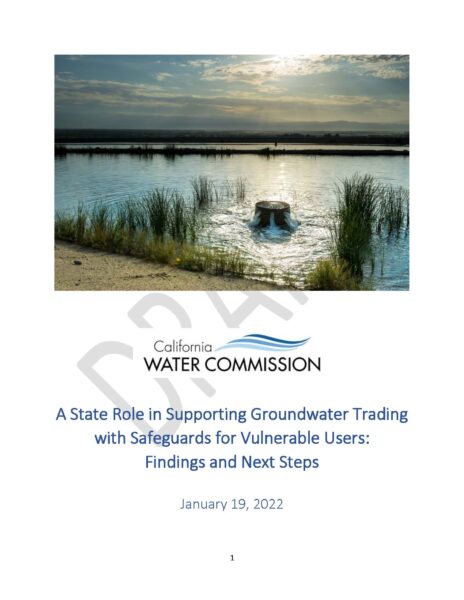 The California Water Commission today approved a white paper that contains its findings and the potential next steps for State engagement in shaping well-managed groundwater trading programs with appropriate safeguards for vulnerable water users: natural resources, small- and medium-size farms, and water supply and quality for disadvantaged communities.
The California Water Commission today approved a white paper that contains its findings and the potential next steps for State engagement in shaping well-managed groundwater trading programs with appropriate safeguards for vulnerable water users: natural resources, small- and medium-size farms, and water supply and quality for disadvantaged communities.
The white paper will be shared with the Secretaries for Natural Resources, Environmental Protection, and Food and Agriculture, who requested the Commission’s engagement on this topic. The paper will guide the continued work on Water Resilience Portfolio Action 3.6 by the California Departments of Water Resources, Fish and Wildlife, and Food and Agriculture, and the State Water Resources Control Board.
Through extensive outreach and input that involved learning from the experience of others around the state, country, and world, the Commission’s paper frames the basic elements of well-functioning, protective groundwater trading programs. Those elements start with trust, access to accurate data, and a sound, well-implemented groundwater sustainability plan that fully considers all beneficial groundwater users when setting sustainable conditions.
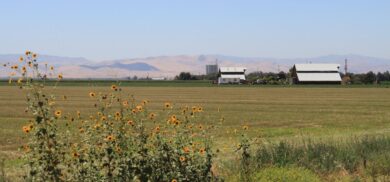
SGMA implementation in the San Joaquin Valley: Farmers’ perspective
From Maven’s Notebook:
The Sustainable Groundwater Management Act, or SGMA, was passed in 2014 during a period of critically dry years; the legislation was intended to stop the adverse impacts occurring due to the severe overpumping of groundwater basins. SGMA required groundwater basins to form a local groundwater sustainability agency and develop a groundwater sustainability plan to achieve sustainability in their groundwater basins within 20 years. Eight years into implementation, all GSAs have submitted the first groundwater sustainability plans and are beginning to implement them. For SGMA, the rubber is just now starting to hit the road.
 The law will most impact the San Joaquin Valley, as most groundwater basins in the valley have been designated as critically overdrafted. At the Urban Water Institute’s annual spring meeting, a panel discussed the challenges that San Joaquin Valley farmers face and how they are responding.
The law will most impact the San Joaquin Valley, as most groundwater basins in the valley have been designated as critically overdrafted. At the Urban Water Institute’s annual spring meeting, a panel discussed the challenges that San Joaquin Valley farmers face and how they are responding.
Seated on the panel were Jason Phillips, CEO of the Friant Water Authority; Dr. David Sunding, an economist and professor at UC Berkeley; and Jack Rice, farmer and consultant.
Click here to continue reading this article from Maven’s Notebook.


